Modeling and density estimation of Heterodera schachtii populations
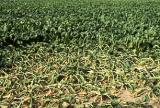
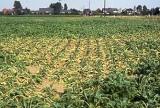
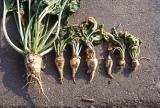
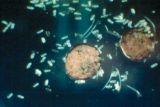
Choice of crop rotation, a parsimonious difference equation
Formerly a Java applet for online applications have been placed at this position. The security demands of Java or browsers of today are so strict, the applet does not even run on my own computer anymore. Alternatively, we produced the results graphically for all combinations available and provide the basic backgrounds.
The model predicts the long term dynamics of BCN Heterodera schachtii
on a discrete year axis. An initial value of the population Pi is required. The following difference equation
 calculates the population size
at year n+1 as a function of the Pi value at year n, the number of generations and the type of cultured crop. This autumn
value is reduced by a constant overwintering rate pov (= 0.6) determining the target size eggs & juveniles/100 ml soil
for the next spring. The population decreases under the chosen non-host of the crop rotation with certain probabilities, and
finally results in a Pi value at pre-planting next time sugar beet.
The objectives are to keep the population density of BCN below the threshold level of 500 E&J/100 ml soil at planting sugar beet.
The threshold value must not be seen that strict anymore, depending how much risk you take, up to ~800-900 E&J might be tolerable.
The model predicts the population for each spring, or pre-planting sugar beet. A Pi value above the threshold provides a rough
estimate about the losses to be expected (approx. 1% per 100 E&J). The numbers of generations per season is another rough
approximation to the temperature conditions of a season (see table) and controls the multiplication rate under sugar beet (for this
model only)
calculates the population size
at year n+1 as a function of the Pi value at year n, the number of generations and the type of cultured crop. This autumn
value is reduced by a constant overwintering rate pov (= 0.6) determining the target size eggs & juveniles/100 ml soil
for the next spring. The population decreases under the chosen non-host of the crop rotation with certain probabilities, and
finally results in a Pi value at pre-planting next time sugar beet.
The objectives are to keep the population density of BCN below the threshold level of 500 E&J/100 ml soil at planting sugar beet.
The threshold value must not be seen that strict anymore, depending how much risk you take, up to ~800-900 E&J might be tolerable.
The model predicts the population for each spring, or pre-planting sugar beet. A Pi value above the threshold provides a rough
estimate about the losses to be expected (approx. 1% per 100 E&J). The numbers of generations per season is another rough
approximation to the temperature conditions of a season (see table) and controls the multiplication rate under sugar beet (for this
model only)
| Table 1 | |
|---|---|
| Generation | Climate |
| 1 | cold |
| 2 | standard |
| 3 | warm |
| 4 | very warm |
| 5 | nowadays possible ? |
Small insertion:
The overall population range or theoretical model
boundaries generated by the choice of generations and size of crop rotation
are shown under the following Link

The model shown here performs poor for mostly sandy soil and crop rotations with high proportions of summer cereals. The multiplication rates found in data from those conditions cannot be repeated by the model, a possible reason might not be model but data related, as a mixing with Heterodera avenae might have occurred.
the following abbreviations of parameterised crops are used:
SB: sugar beet; WW: winter wheat; WB: winter barley; RA: rape; BE: beans; OAT:oat; RYE: rye; MA: maize; PO: potato; SG: summer barley; SW: summer wheat;
The following intercropping species are implemented: (RA): rape;
(MU); mustard; (OIL): oil radish; PH: Phacelia; mustard and oil raddish as resistant varieties, rape in short time culture (ca.for 6 weeks).
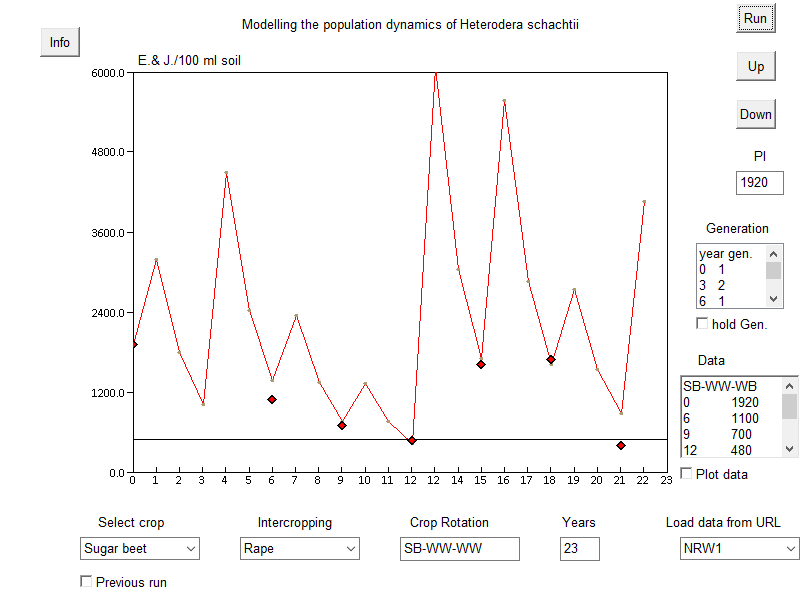
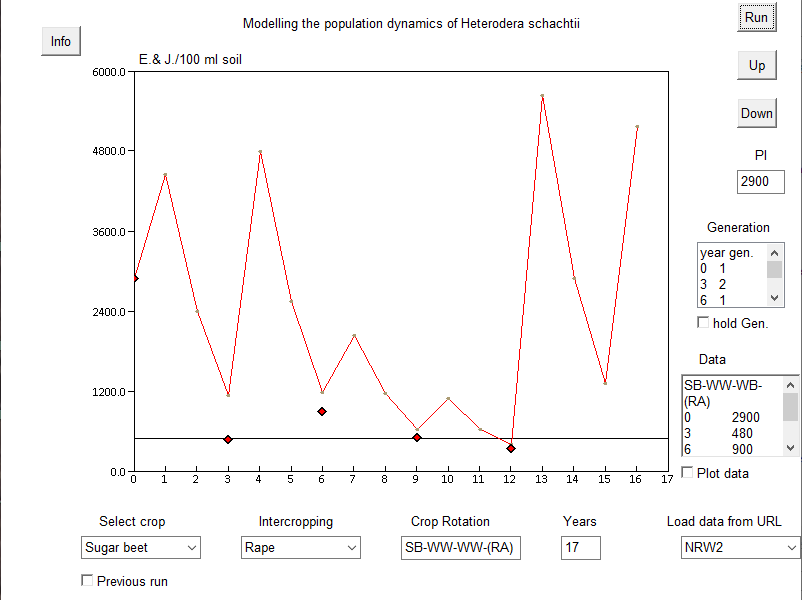
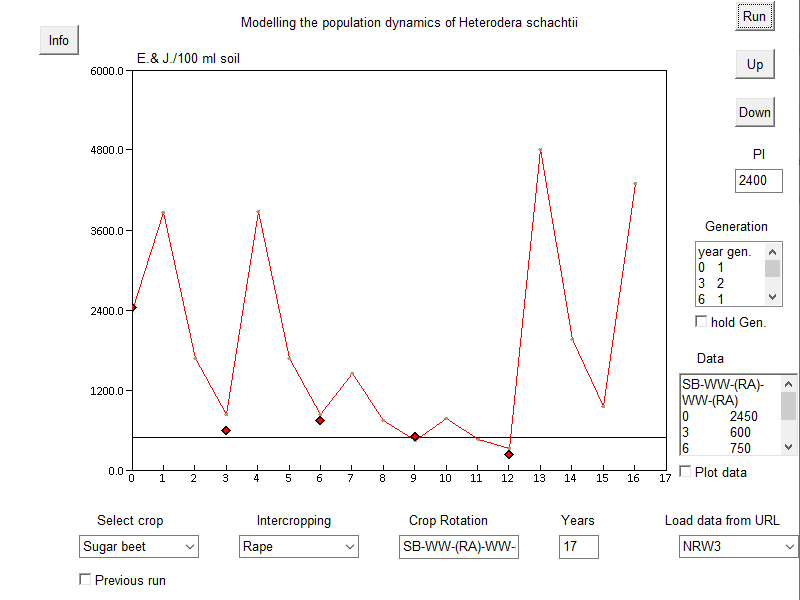
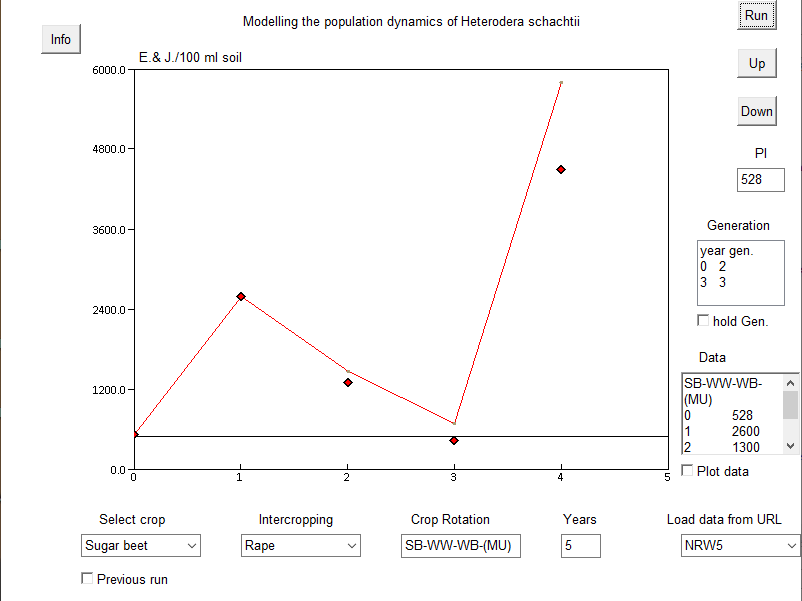
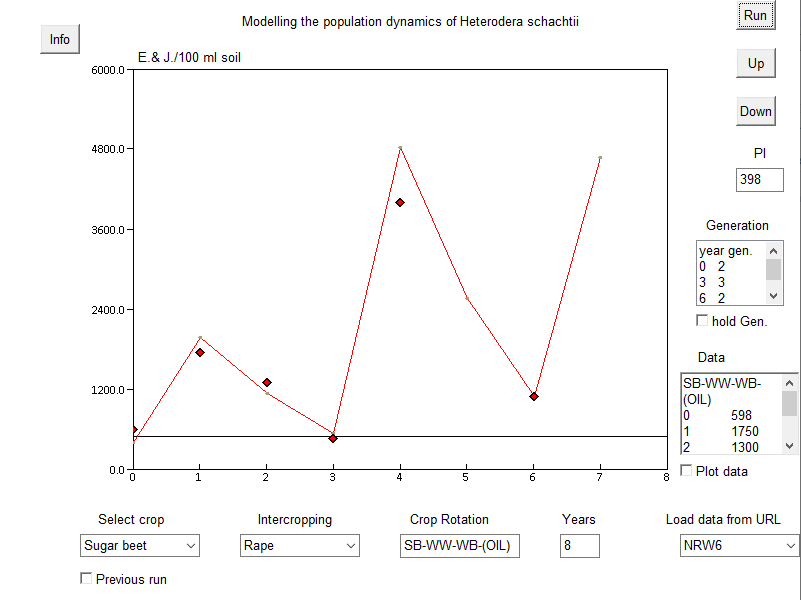
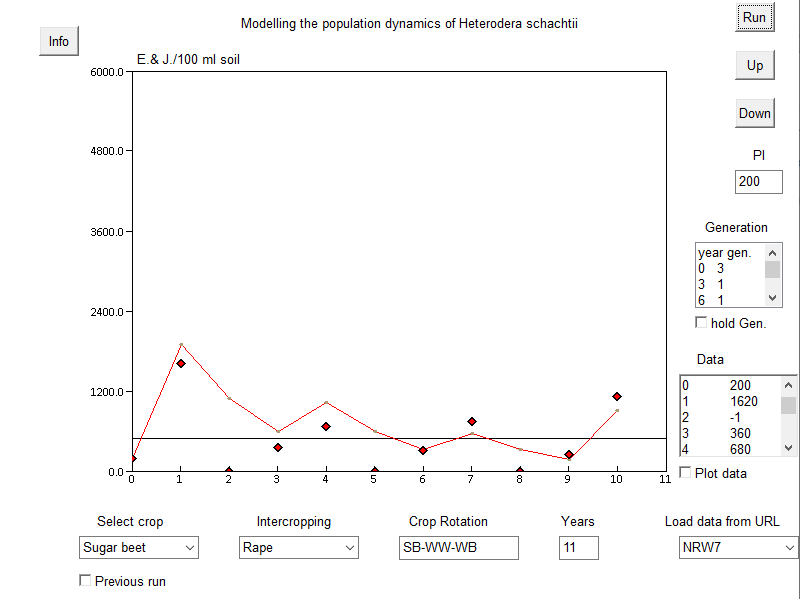
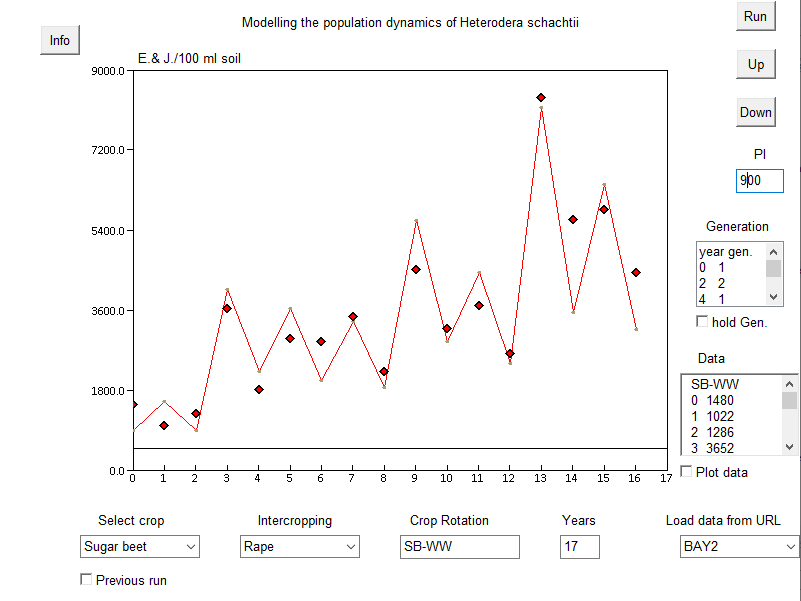
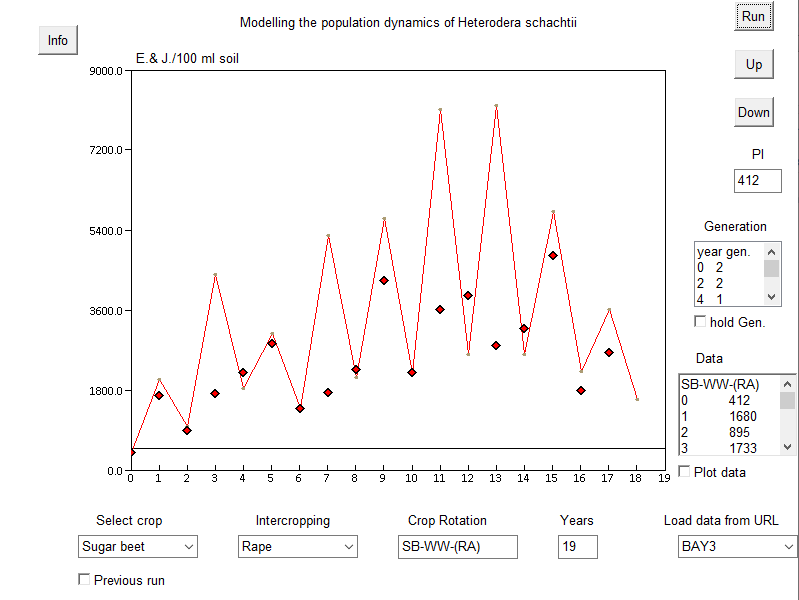
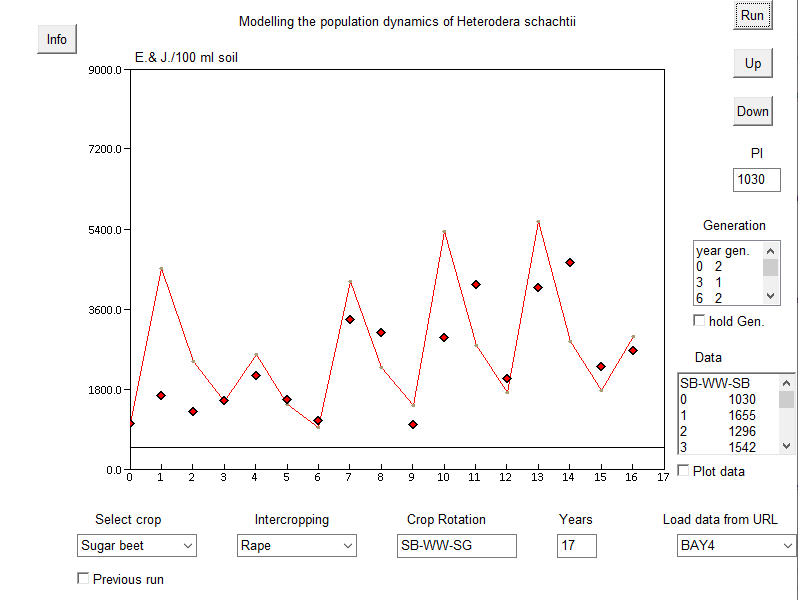
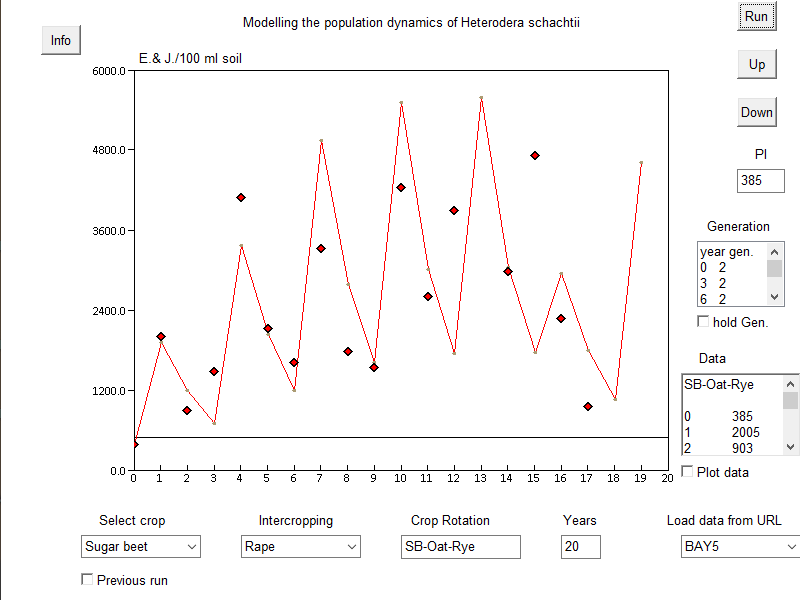
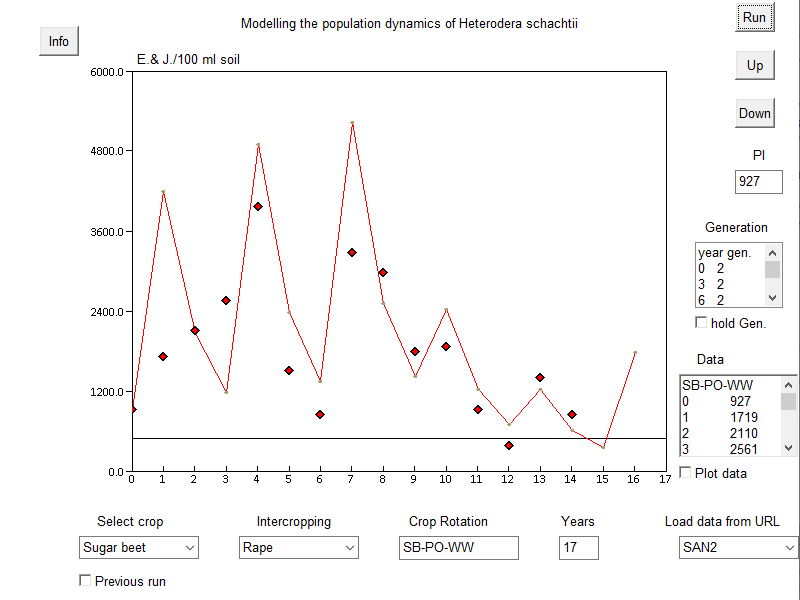
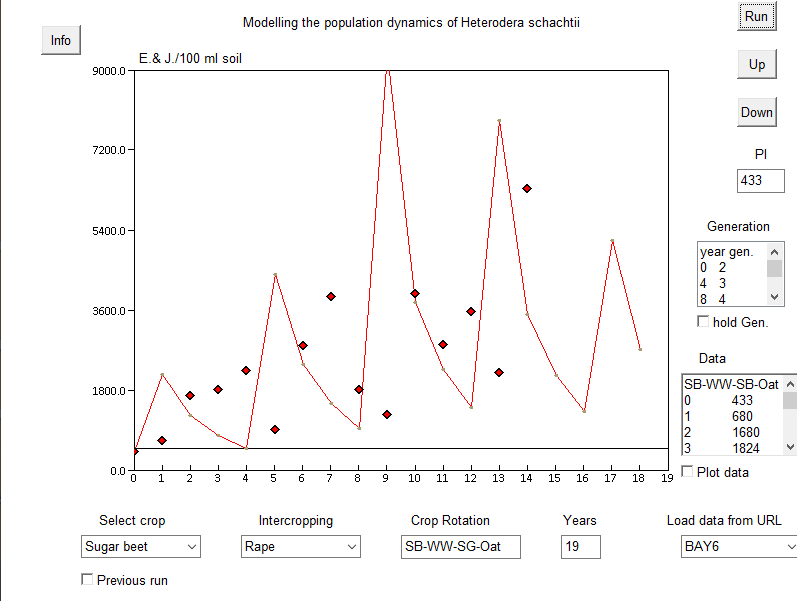
data show an increasing population under non-hosts
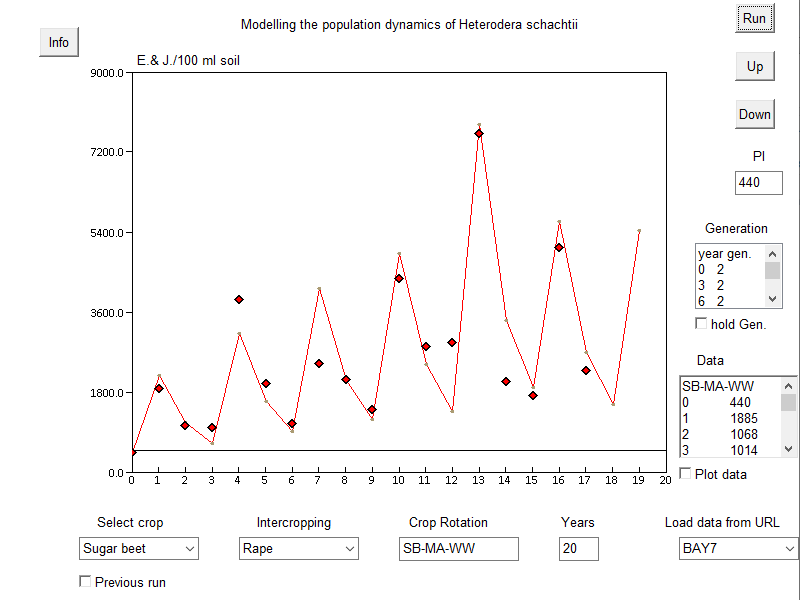
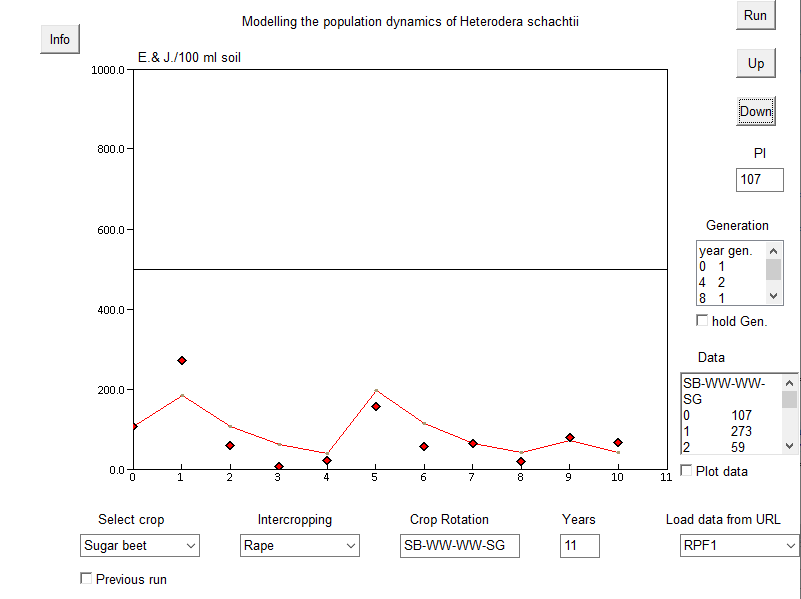
data below detection threshold
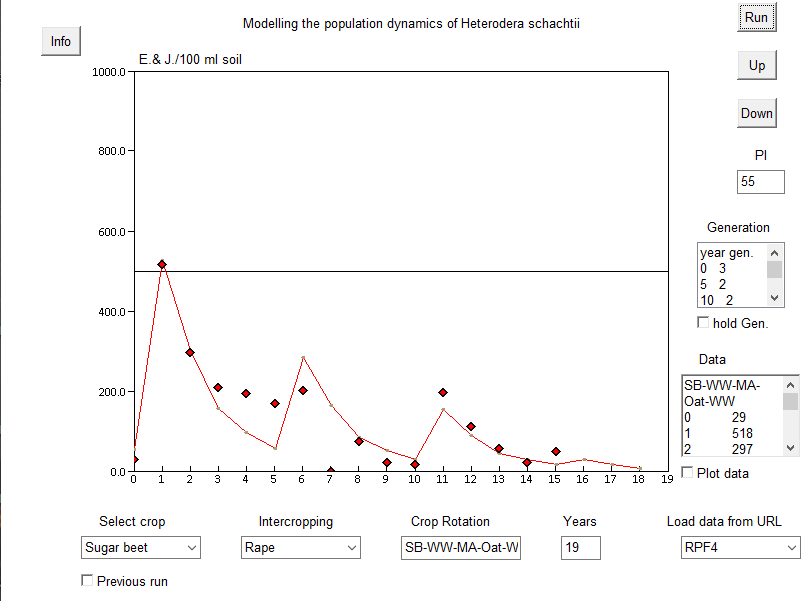
data below detection threshold
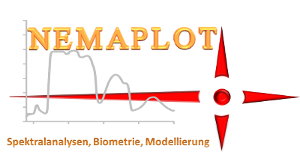 Evaluation reinvented
Evaluation reinvented